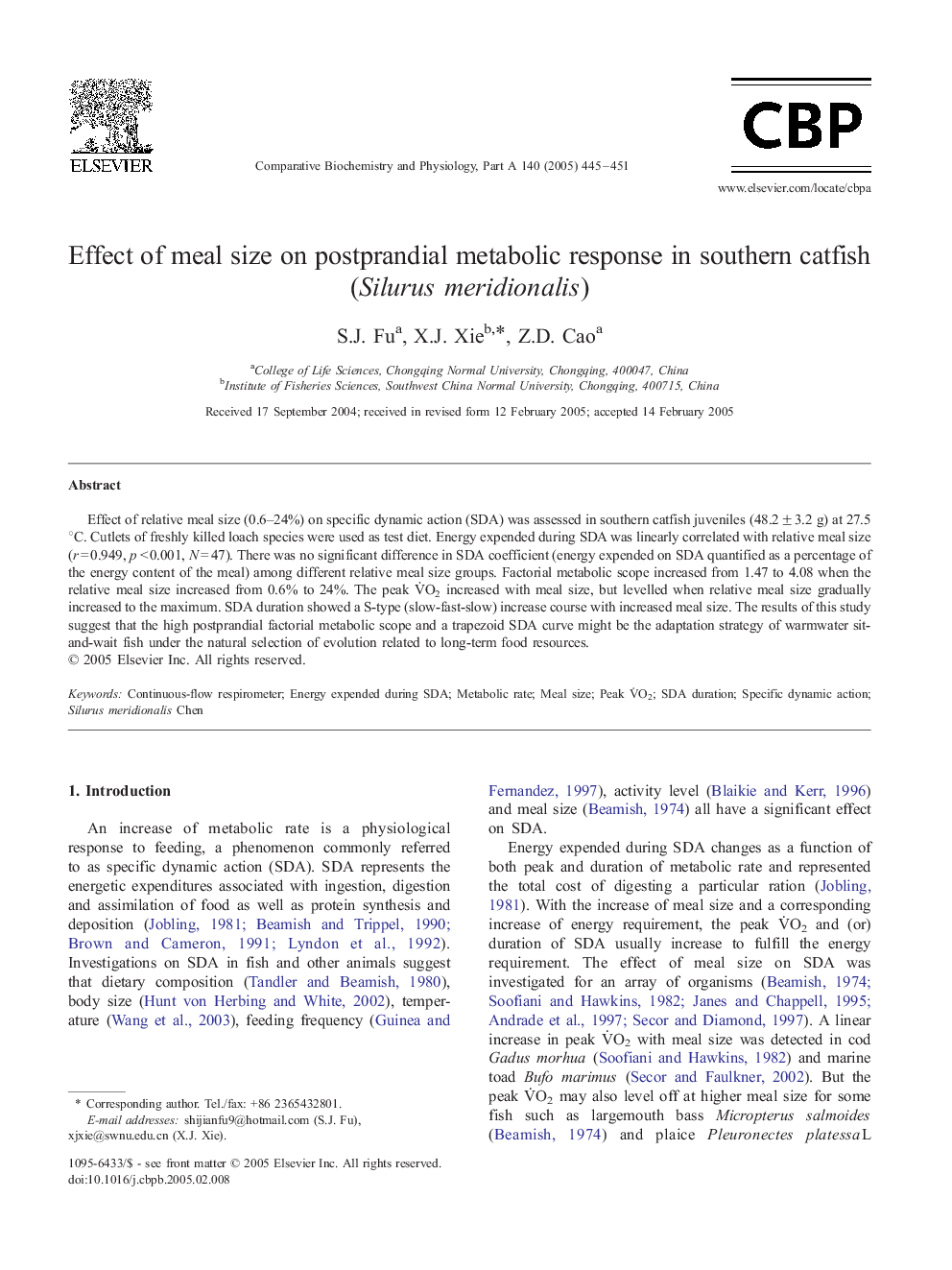| Article ID | Journal | Published Year | Pages | File Type |
|---|---|---|---|---|
| 9889584 | Comparative Biochemistry and Physiology Part A: Molecular & Integrative Physiology | 2005 | 7 Pages |
Abstract
Effect of relative meal size (0.6-24%) on specific dynamic action (SDA) was assessed in southern catfish juveniles (48.2 ± 3.2 g) at 27.5 °C. Cutlets of freshly killed loach species were used as test diet. Energy expended during SDA was linearly correlated with relative meal size (r = 0.949, p < 0.001, N = 47). There was no significant difference in SDA coefficient (energy expended on SDA quantified as a percentage of the energy content of the meal) among different relative meal size groups. Factorial metabolic scope increased from 1.47 to 4.08 when the relative meal size increased from 0.6% to 24%. The peak VËO2 increased with meal size, but levelled when relative meal size gradually increased to the maximum. SDA duration showed a S-type (slow-fast-slow) increase course with increased meal size. The results of this study suggest that the high postprandial factorial metabolic scope and a trapezoid SDA curve might be the adaptation strategy of warmwater sit-and-wait fish under the natural selection of evolution related to long-term food resources.
Related Topics
Life Sciences
Biochemistry, Genetics and Molecular Biology
Biochemistry
Authors
S.J. Fu, X.J. Xie, Z.D. Cao,
